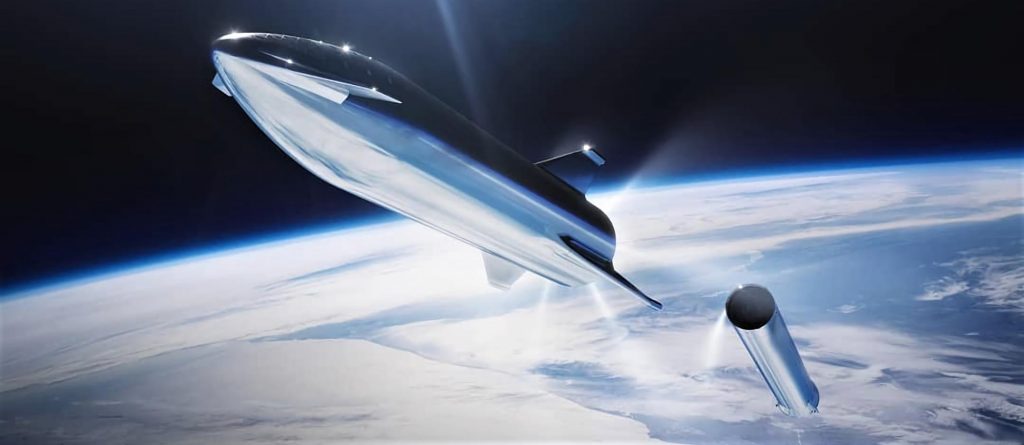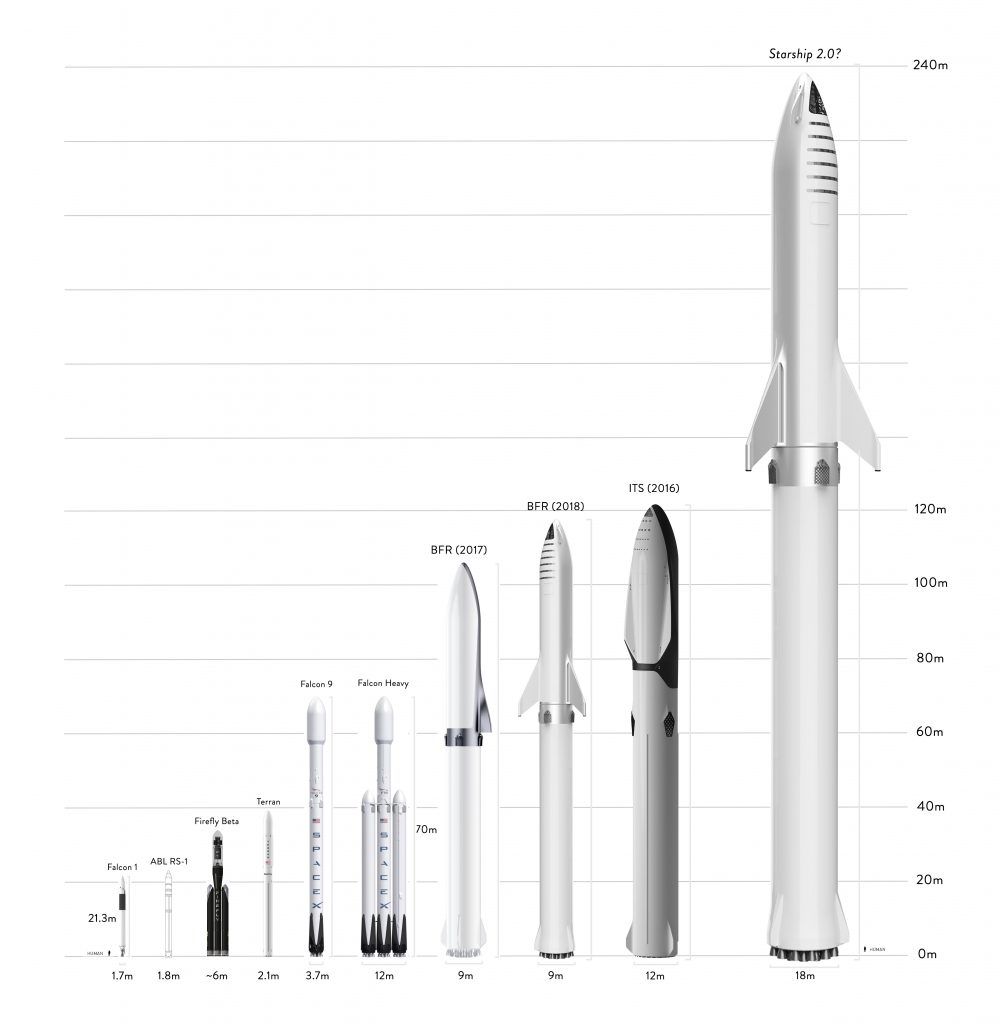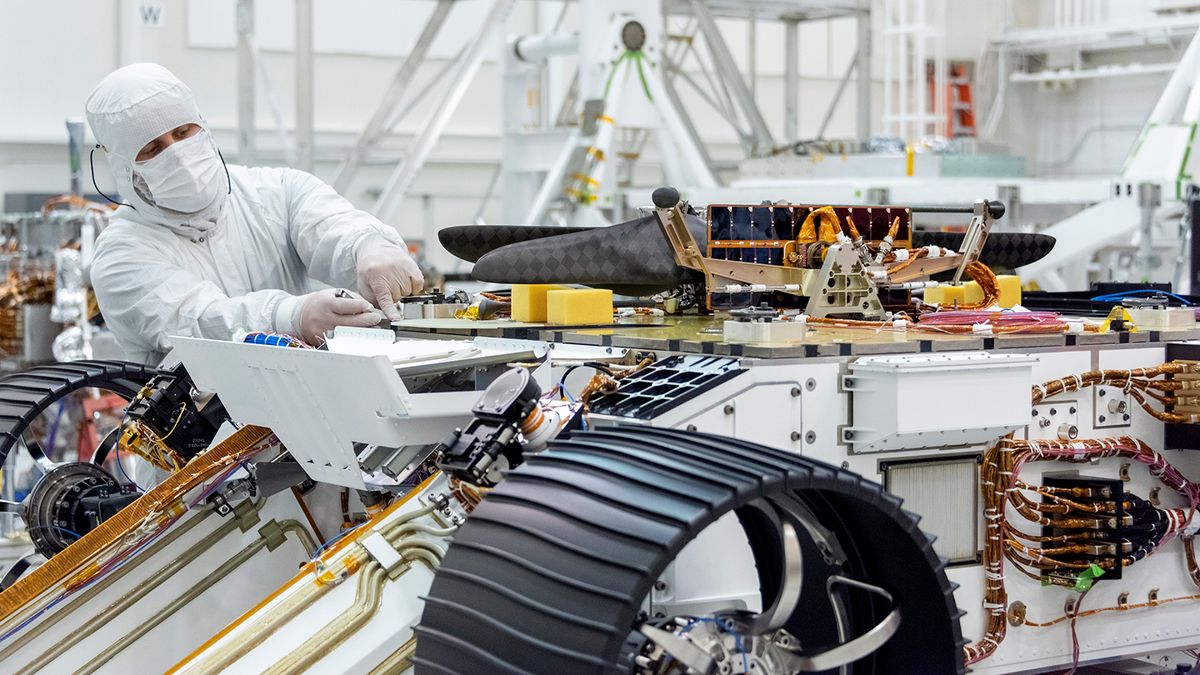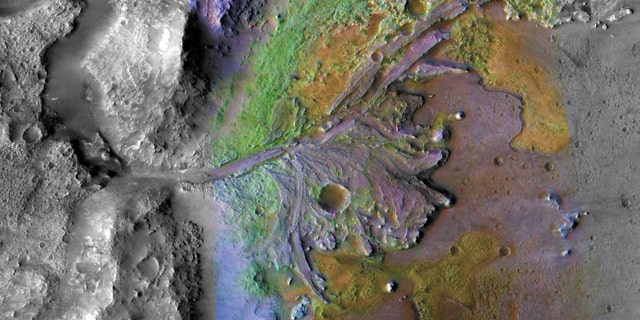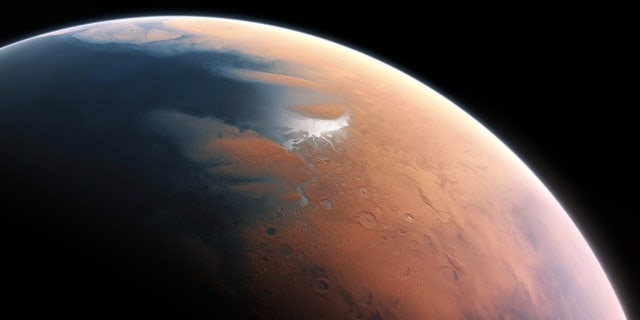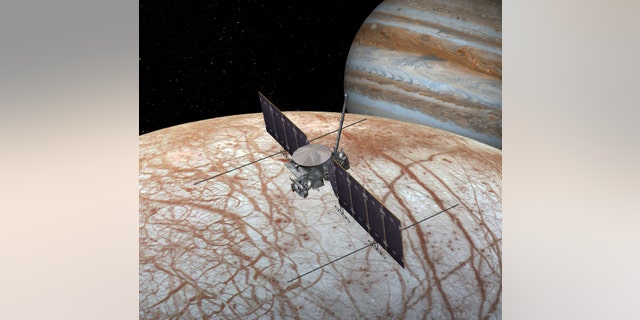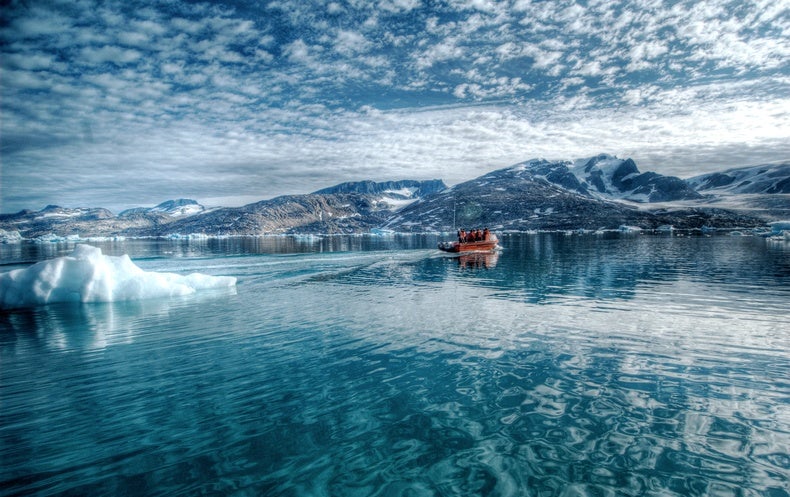In an apparent disappointment for President Trump, the Danish government has made it clear: Greenland is not for sale.
The Wall Street Journal first reported Thursday that Trump had repeatedly expressed an interest in buying the semiautonomous Danish territory and that he had encouraged aides to look into the possibility. By Friday, officials in Greenland and Denmark had rebuffed the idea, stating that Greenland is open for trade but cannot be bought.
Trump is said to have developed the idea in part over an interest in Greenland’s vast natural resources—an abundance of minerals, oil and teeming fish stocks, not to mention its breathtaking natural landscapes. Greenland’s strategic location in the north Atlantic Ocean is also thought to appeal to national security interests.
But these days, the island is perhaps best-known as one of the foremost symbols of climate change. Home to the world’s second-largest ice sheet, the island’s rapidly rising temperatures and accelerating melt rates are the regular subject of headlines and a source of growing concern among climate scientists.
Trump has been an outspoken critic of mainstream climate science. And he’s devoted much of his time in office to undoing various Obama-era climate policies, from overhauling the Clean Power Plan to withdrawing the United States from the Paris climate agreement.
But any party interested in Greenland’s natural resources would almost certainly be unable to ignore the island’s ongoing response to global warming. Some of the biggest economic opportunities in Greenland, from mining to fishing, are all subject to influence from the thawing landscape.
It’s safe to say that climate change in Greenland is an unavoidable issue from every perspective, including—and perhaps even especially—business. If it were for sale after all, any potential acquirer would quickly find themselves reckoning with the front lines of global warming and its implications for all aspects of life on the island.
As a leader, rather than simply an observer, of Greenland, Trump could have learned a few climate lessons. Here are some of the most important ones:
Minerals and melting
Anyone interested in Greenland’s natural wealth would be forced to take note of its rapidly vanishing ice. As the ice sheet melts and recedes, there’s increasing access to the island’s stores of zinc, copper, iron, uranium and certain rare earth minerals, sparking increasing national discussions about the territory’s economic future.
In 2013, Greenland’s parliament reversed a decades-old ban on uranium mining, opening up the possibility for an expansion in large-scale mining projects on the island. Australian mining company Greenland Minerals Ltd. already has plans for a major uranium and rare earth minerals mine at a mountain called Kvanefjeld, near the town of Narsaq in southern Greenland.
Meanwhile, experts have also suggested that Greenland could become a major exporter of sand in the midst of an ongoing global sand shortage. Melting ice is sweeping large quantities of sediments out to the coast, where they can easily be collected.
But the opportunities are coming at an enormous cost.
Greenland’s vast ice sheet is easily its most prominent feature, covering about 650,000 of the island’s 810,000 square miles. It contains enough ice, in total, to raise global sea levels by more than 20 feet.
Recent research suggests that the ice sheet is melting at its fastest rates in centuries, if not thousands of years—and the melting seems to be speeding up (Climatewire, Dec. 6, 2018). Since 2002, Greenland has been losing an average of around 270 billion tons of ice each year.
Some of those losses come from crumbling glaciers pouring chunks of ice into the ocean. But scientists believe a majority of it is driven by melting that occurs right on the surface of the ice sheet, causing liquid water to run off into the sea.
This summer has served as a major warning about the ice sheet’s vulnerability to rising temperatures. A severe Arctic heat wave spurred one of Greenland’s most intense melting events on record at the end of July. Scientists estimate that the ice sheet has already lost about 250 billion tons of ice so far this year, in large part because of this summer’s intense surface melting.
Scientists warn that heat waves are becoming more intense and more frequent, meaning these kinds of extreme melting events are likely to happen more often in the coming years. That means the ice sheet’s contributions to global sea-level rise may significantly increase in the coming years.
Ice in the ocean
Recent surveys have suggested that the waters off the Greenland coast may also hold potential for oil production. It remains controversial, with strong opposition from environmental groups citing the impacts of drilling. Nonetheless, some companies have already planned or commenced exploratory drilling in the region.
Experts have pointed out that the conditions for offshore oil exploration remain difficult in Greenland’s icy waters. A 2014 report from the Brookings Institution suggested that commercial oil production in Greenland may still be decades away, in large part due to the treacherous waters, minimal winter sunlight and high costs of extraction.
But it’s something to keep an eye on in the suite of Greenland’s economic opportunities. And it’s also an industry likely to be affected by the progression of climate change in various ways.
Declining sea ice in the Arctic Ocean is generally expected to make drilling easier. On the other hand, increasing ice loss from Greenland’s glaciers could complicate the matter. As glaciers calve more icebergs into the ocean, the large chunks of floating ice can be hazardous to both ships and oil operations.
According to the Coast Guard’s International Ice Patrol program, the four years from 2014 to 2017 all experienced “extreme” iceberg conditions in the North Atlantic, with most of the icebergs originating from Greenland.
While surface melting may be the primary cause of Greenland’s ice loss, its oceanside glaciers—which pour large chunks of ice into the sea as they melt and retreat—are a growing cause for concern. In recent years, research has begun to suggest that changes in the flow of warm ocean water may be helping to melt glaciers from the bottom up, speeding up their retreat.
A 2017 mapping project suggested that significantly more ice in Greenland may be subject to the ocean’s melting influence than previously thought.
Warming, by land and by sea
Rising temperatures are contributing to noticeable changes in the Arctic ecosystem, with implications for the hunting and fishing industries in Greenland.
Fishing is of particular importance. Greenland’s government estimates that the industry accounts for about 85% of the country’s exports and employs more than a fifth of the workforce.
Warming waters are expected to affect the region’s fisheries in a few different ways. Some species that have previously been scarce in the icy waters, such as mackerel, already seem to be increasing. On the other hand, scientists have predicted that other types of catch, such as shrimp, may begin to decline.
While substantially less significant for the national economy, hunting also helps to support many households on the island. It’s also being affected by the changing landscape.
Melting ice may make it increasingly difficult to reach certain hunting grounds, which have been traditionally accessible mainly by dog sled or snowmobile. And declining sea ice may pose a growing challenge for seal hunting.
Altogether, if Trump’s interest in Greenland was primarily linked to its considerable natural resources, it would be nearly impossible to ignore or deny the influence of climate change. The effects of global warming are apparent in every aspect of the island’s life and economy, and its natural landscape is one of the most dramatically shifting places on Earth.
On the other hand, these are all lessons Trump might have already learned at home in the United States. Thawing permafrost and melting glaciers in Alaska, raging wildfires in California, rapid erosion in Louisiana, extreme flooding in the Midwest, the destructive power of intensifying hurricanes on the coasts—they’re all affecting the daily lives of U.S. residents and the national economy.
If these issues haven’t already taught the president a thing or two about climate change, it’s possible that even buying Greenland might not have done the trick, after all.
Reprinted from Climatewire with permission from E&E News. E&E provides daily coverage of essential energy and environmental news at www.eenews.net.
 The launch was initially planned for 2007.Getty
The launch was initially planned for 2007.Getty NASA engineers are still working on putting in a five-layer sun shield to protect the telescope from the infrared light coming from the Sun.Getty
NASA engineers are still working on putting in a five-layer sun shield to protect the telescope from the infrared light coming from the Sun.Getty

